Why vocabulary bingo? Here’s why!

Are you looking for a fun and interactive way to review vocabulary with your students? Look no further than vocabulary bingo! When playing vocabulary bingo, students have the opportunity to see, hear, and use the new vocabulary in context, which can help them better understand and remember the words. This game is an excellent way for students to test their understanding of new words and promotes a sense of friendly competition in the classroom. So why wait? Gather your bingo markers and get ready to make vocabulary review a blast for you and your students!
3 Reasons to Try Vocabulary Bingo in Your Adult ESL Classroom
From promoting friendly competition to providing an opportunity for students to test their understanding of new words, the benefits of using vocabulary bingo in the classroom are numerous. So without further ado, let’s dive into the three reasons to give vocabulary bingo a try in your adult ESL classroom.
Vocabulary Bingo Promotes Active Engagement
One of the key benefits of using vocabulary bingo in adult ESL classrooms is that it encourages active, engaged learning from students. When students are actively participating in the review process, rather than just passively listening to a teacher’s lecture, they are more likely to stay focused and attentive, which can improve their overall understanding and retention of the vocabulary.

Vocabulary bingo is a great way to achieve this active engagement. It requires students to listen and think about what’s being called out (words, definitions, clues, etc.) and find the corresponding answer on their cards. This mental effort helps keep students focused and invested in the review process, leading to better vocabulary retention.
Vocabulary Bingo Encourages Collaboration and Competition
Incorporating group work into vocabulary bingo can bring a number of benefits to adult ESL classrooms. First and foremost, playing vocabulary bingo in groups allows for collaboration and teamwork as students work together to find the words on their bingo cards. This can lead to a sense of community and cooperation among classmates as they support and encourage each other to succeed.
Collaboration and teamwork can also create a more positive and enjoyable learning environment, as students feel more connected and invested in the material. This is especially important in adult ESL classrooms, where students may be more motivated to learn when they feel a sense of belonging and camaraderie with their classmates.
In addition to promoting collaboration and teamwork, playing vocabulary bingo in groups can encourage friendly competition as students strive to be the first to get a bingo. This can add excitement and enthusiasm to the review process as students cheer each other on and try to outdo one another in a healthy and positive way.
Playing vocabulary bingo in groups can be a powerful tool for creating a positive and enjoyable learning environment in adult ESL classrooms. By encouraging collaboration, teamwork, and friendly competition, vocabulary bingo can engage and motivate students as they review and practice new vocabulary words.
Vocabulary Bingo is Adaptable to Different Levels
You can quickly adapt vocabulary bingo to different levels of English proficiency by using a mix of easy and challenging words, providing word lists and definitions, and using visual aids. Doing so makes it a versatile activity you can use with learners at various levels.
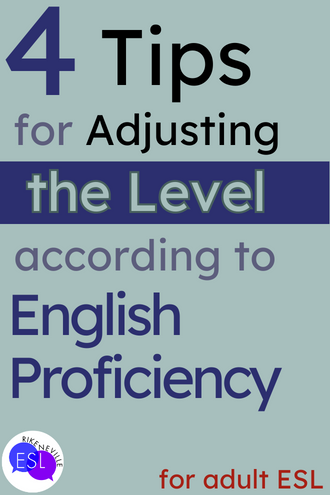
Adjusting the Level According to English Proficiency
It’s important to adjust the level of difficulty of vocabulary bingo to meet the needs of your students. Here are a few strategies to consider:
- Use a mix of easy and challenging words: Mix some easier words with more challenging ones to support lower-level learners.
- Provide word lists: Give students a list of the vocabulary words that will be used in the game so they have time to review and practice before playing.
- Use visual aids: Use images or other visual aids to help students understand the meaning of the words.
- Offer support: Provide additional support for lower-level learners by offering definitions or explanations for the words or providing extra time for them to complete the game.
Choosing the Right Bingo Card Design and Call-outs for Your Students
Before you start a game of vocabulary bingo, you’ll need to decide on the design of your bingo cards. There are two basic options: image vocabulary bingo and vocabulary word bingo.
- Image vocabulary bingo: In this version, the grids on the bingo cards are filled with images that represent the vocabulary words students need to review. This is a great option for true beginners, students who aren’t reading yet, or when you want to focus on something other than reading the words.
- Vocabulary word bingo: In this version, the grids on the bingo cards contain text, such as the vocabulary words themselves, their definitions, or synonyms. This version is a good choice for upper beginners to advanced students.
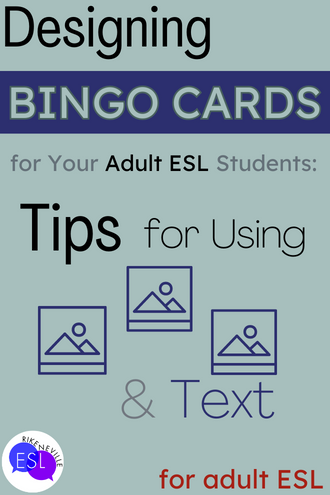
For beginners, using images on the bingo cards is a good choice if the goal is identification and understanding. You can adjust the level of difficulty by using different types of call-outs. For example, you could call out the words themselves for the most accessible level or provide clues for a slightly more challenging version.
If the goal is reading and understanding the words, using text on the bingo cards is a better choice. Be sure to choose a clean, easy-to-read font, such as “Lexend,” which closely resembles the letters students use to write English and is dyslexic-friendly. Make the longest word as big as possible to fill a box on the grid, and then match that size with all the other terms. You can adjust the difficulty level by using different types of call-outs, such as the word itself, the definition, or a clue.
Using text on the bingo cards is the best choice for intermediate to advanced levels. Some types of call-outs you could try include the words themselves, their definitions, clues, synonyms, antonyms, or sentences with context clues that contain the word “BLANK.” You can also use grammar as a clue when giving a series of call-outs for each word.
In mixed-ability classes, it’s a good idea to use a series of call-outs for each word. Start with the most challenging option, and then provide 2-3 more options that gradually get easier. This ensures that your more advanced students are being challenged while allowing all students to participate fully.
Getting Student Buy-In
One of the key factors to making vocabulary bingo a success in the classroom is getting student buy-in. Here are a few strategies to consider:

- Personalize the review process: Give students the power to choose the words or definitions that will appear on their bingo cards. This can make the game more meaningful and relevant to their learning needs.
- Encourage teamwork and collaboration: Divide the class into teams and have each team work together to complete their bingo cards. This can create a sense of community and encourage students to support each other as they learn.
- Customize the call-outs: Give students the option to choose the type of call-outs that will be used in the game, such as word definitions, synonyms, antonyms, or clues. This can help make the game feel more personalized and help students feel more invested in the review process.
- Offer incentives and rewards: Small prizes or rewards can be a great way to motivate students and create a sense of friendly competition. Consider offering a small prize or special privilege to the student who gets a bingo first or the student who shows the most improvement in their vocabulary skills. You might be surprised by how competitive adults can get over a mini candy bar!
- Emphasize the benefits: Don’t let the fun fool them! Reminding students that vocabulary bingo is a fun and effective way to practice and review new words can help to convince them that it’s a valuable and worthwhile activity. By highlighting the benefits of vocabulary bingo and explaining how it can support language learning, you can help students see that playing these games is not a waste of time but rather an enjoyable and beneficial part of their language-learning journey.
Tips for Success
To ensure the success of vocabulary bingo in your adult ESL class, consider the following tips:
- Plan ahead: Make sure you have enough bingo cards and markers for all students, and prepare any word lists or definitions beforehand.
- Establish clear rules: Clearly explain the rules of the game and any variations being used to avoid confusion or disputes.
- Encourage participation: Find ways to engage all students, such as allowing them to take turns calling out words or allowing them to choose which version of vocabulary bingo to play. Some students will prefer to use their own bingo cards, and others will love playing with a partner.
- Review after the game: Take some time after the game to review the words and their meanings to reinforce learning and retention.

Examples of Active Engagement with Vocabulary Bingo
Now, let’s look at how vocabulary bingo can support active engagement in the classroom. Instead of students sitting quietly memorizing words, picture this:
In an adult ESL class focused on food vocabulary, the teacher spices things up with a game of vegetable vocabulary bingo. Students are split into small groups and given bingo cards loaded with delectable images. As the teacher calls out the words, the students eagerly search their cards for a match, focusing intently on the task at hand and perhaps peeking at a neighbor’s card. The atmosphere crackles with energy as students repeat the words under their breath while hunting for the image, determined to be the first to get five in a row. This is not a passive, quiet class!

In another class, the teacher heats up student engagement with a game of summer vocabulary bingo. Groups of students receive bingo cards filled with summer–related words and pictures, and as the teacher calls out the terms and definitions, the students work together to find the correct matches on their cards. The teamwork and collaboration lead to a sense of community and cooperation among the students, enhancing their overall learning experience. Well, except for that super competitive student Afaf, who playfully covers the card of the person next to her to try to buy some more time.
The teacher ignites friendly competition in a third class with a game of clothing vocabulary bingo. Students are divided into small groups and given bingo cards filled with clothing vocabulary words and pictures. As the teacher calls out the vocabulary words and definitions, the students race to fill their bingo cards and shout, “Bingo!” The lively competition flavored with boasts and side bets adds excitement and motivation to the review process, helping students stay engaged and motivated.
You could have that.
Or you could be grading worksheets they completed.
Worksheets have their time and place. So does bingo.
I’m sure that you more than agree that vocabulary bingo is an effective and enjoyable way to review vocabulary in adult ESL classrooms. After all, it promotes active engagement, encourages collaboration and competition, and can be adapted to different levels of English proficiency. By allowing your students to see, hear, and use vocabulary in context, vocabulary bingo can help improve their understanding and retention of new words. Liven up your vocabulary review sessions with this fun way to practice new words. Vocabulary bingo is definitely worth a try!
Want some ready-made vocabulary bingo sets?




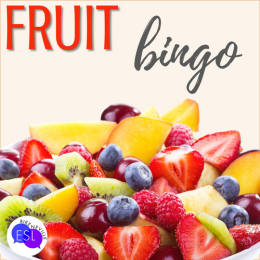
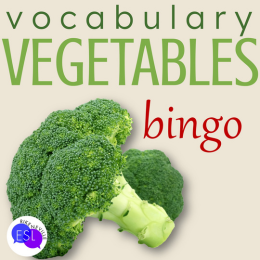
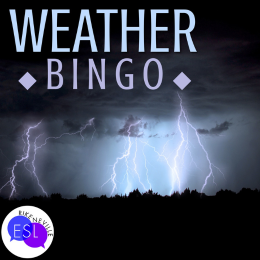

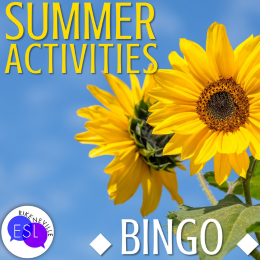


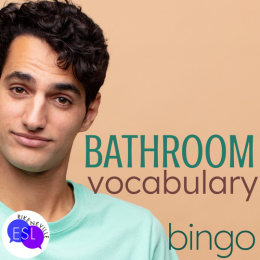



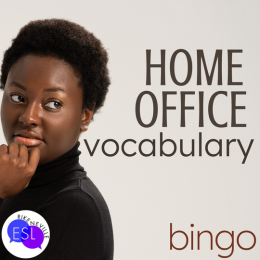

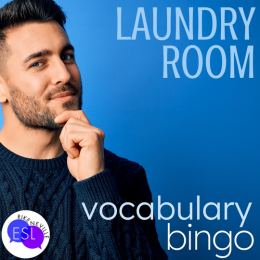
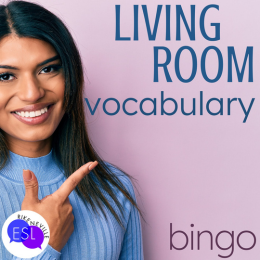



M Donovan says
Remove from all emails / UNSUBSCRIBE – i never signed up for this info.
Rike Neville says
Hi! No one with your name or email address has ever signed up for my newsletter, so I couldn’t have sent you anything. I only know your name and email address because you shared that when you commented here. This is an article I wrote and published on my website. It is freely available for anyone on the internet to read, and I have never emailed it to anyone. But, to be extra cautious, I will block your email so that you cannot ever accidentally subscribe. ^_^ Have a great day! 🙂 EDIT TO ADD: I could only block the address you provided here as I don’t know of any others you may have.